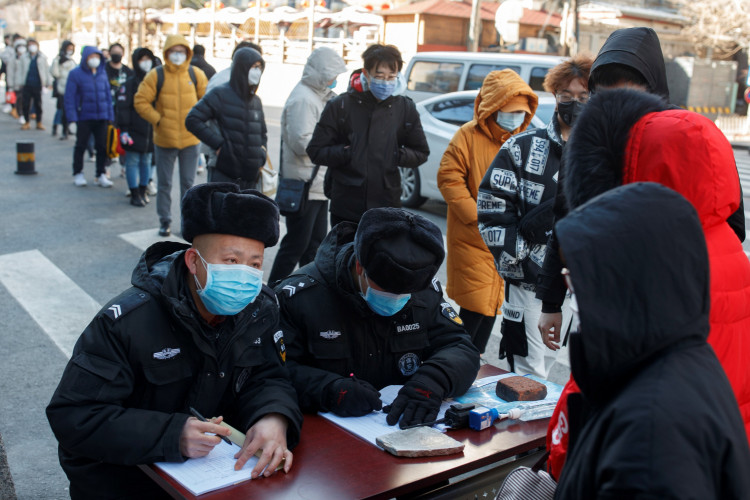China's CoVID-19 cases and the death toll dropped on Monday as the country's air pollution rate also declined, marking a dramatic turnaround of events following a fierce battle against the Wuhan coronavirus.
China Announces Decline in New Cases
On Tuesday, the Chinese health authority said the country has 125 new coronavirus cases and 31 deaths on Monday on the mainland, marking an the apparent decline in new CoVID-19 cases in the novel virus' origin country.
According to Xinhua, the Chinese National Health Commission said all of the deaths on Monday were in Hubei Province, the province where the seafood market in Wuhan city believed to have been the starting point of the outbreak, is located.
As of Monday, China has discharged 47, 204 CoVID-19 patients after they recovered. Mainland deaths stood at 2,943, and a total of 30,004 remain at the hospital for treatment.
Guangdong Announces Quarantine Rules, Shanghai Follows Suit
Earlier on Tuesday, Guangdong Province announced that it will start requiring visitors from countries with "relatively serious virus conditions" to undergo a two-week quarantine as a precautionary step.
Shanghai has since followed suit, with the city government reiterating that the new rules will apply to all tourists and visitors, regardless of their nationalities, Al Jazeera reported.
Also on Tuesday, Hong Kong chief executive Carrie Lam said in a media briefing that the government has chartered four planes to evacuate 533 of its people from coronavirus-hit Wuhan.
Passengers who will be allowed to travel on Wednesday and Thursday on the chartered flights will still undergo a 14-day quarantine upon arrival in Hong Kong.
Containment Efforts Show Early Results
China has been hard at work in containing the virus since it started spreading dramatically across Hubei Province early in January.
Among the methods used by the government to hopefully keep the coronavirus from spreading further is the limitations implemented on movements of millions of residents in the province. While the efforts are showing early positive results, some experts noted that there are other challenges ahead.
Health and infectious disease experts pointed out that the true test will begin after the government lifts its lockdown orders. At this time, people will return to work, students will go back to school, and more people will move to crowded areas again.
On the other hand, hopes are high for China's slowing infection and death toll numbers. It is expected that the trend will continue as the weather warms up.
Maps Show China's Air Pollution Data Declining
Meanwhile, new maps from the European Space Agency and NASA indicated that China's nitrogen dioxide emissions have declined since the coronavirus outbreak started.
According to The Verge, the maps indicated that there are lower concentrations of nitrogen dioxide in Wuhan. Last year, during the January 1 to February 25 period, the region showed red flags all around but during the same period this year, the colors have changed to blue.
While scientists noted that usually, the density drops in China during the Lunar New Year, the latest data present a striking difference after the government limited travel movement across the Hubei Province.
Scientists said cleaner air in Wuhan and neighboring towns is expected to help bring relief to residents as the country continues to battle the CoVID-19 strain.
More Recoveries Than Infections Spark Hope
Health experts are starting to see a ray of hope in China's coronavirus situation as the country now has more recovered patients then the outstanding infection toll.
Analysts pointed out that with China's recoveries at 44,518 and 32,741 outstanding infections as of Monday, there is a clear slowdown and a more apparent result of the country's containment methods, Business Insider reported.
It may be too early to say that China has already overcome the epidemic but the optimistic trend is sending positive waves across other Asian countries still struggling to contain the fast-spreading CoVID-19 virus.
The trend in slower infections and higher recoveries has held on since the weekend, marking a change in what was earlier a worrisome situation for the World Health Organization (WHO) and other global health agencies.






